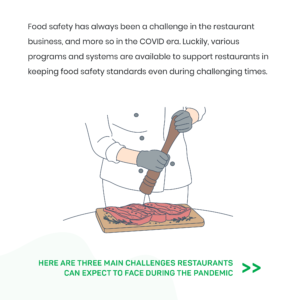The COVID 19 pandemic flipped the world’s education system upside down this year, causing a significant shift in how pupils learn and teachers teach. The necessity of learning analysis is highlighted by this training pause.
Educators can use Learning Analytics to keep track of what students learn on the internet and report on it. Educators can keep up with the newest advancements and critical elements influencing classroom learning by interacting with their students. The current state of learning analysis encompasses all of higher education.
Here are five key themes that faculty should be aware of as they prepare to keep up with the latest educational innovations. They will be able to create an effective learning environment if they are aware of the most recent trends and major aspects influencing classroom learning.
This necessitates the construction of professional development programs for students who excel at unique teaching and learning methods in order to improve their lateral thinking abilities. It is critical that educators get familiar with the current generation of student abilities and skills, as well as the finest accessible technology.
To help instructors impact contemporary learning patterns, school administrators should take the initiative to establish such programs and training for teachers of all classes. This is a trend that may be seen in both private and public schools. In the fall of 2017, 6.5 million students were enrolled in postsecondary institutions for distant learning and scholarships.
For teachers and institutions who wish to continue to provide their students with the rigorous training they need to succeed, this approach has a variety of benefits and drawbacks. The expansion of
Because of technical capabilities, a diverse selection of material, learning aids, and tools are available for students to acquire high-quality education via the Internet.
Furthermore, most educators can help children who have experienced trauma or are going through a difficult time.
People with numerous disabilities or extraordinary capabilities, and those who benefit from a definite diagnosis are among those who are affected by catastrophic events. Many more pupils, on the other hand, can manage stress, confusion, and uncertainty without severely affecting their academic performance. A competent awareness of what is unique to each student and what can be learned outside of the sphere of worksheets and basic reading devices is necessary of a general teacher.
Adding art projects to science and math lessons, for example, can aid children who are interested in STEM disciplines. The Genius Space is a trend to keep an eye on if you’re seeking for ways to boost student engagement in your classroom. Genius Hour is a revolutionary educational strategy that allows pupils to focus on self-selected projects for one hour each day.
Blended learning aims to improve students’ learning experiences by combining personal learning with web-based and virtual learning. Universities have implemented blended learning to allow students to benefit from the best of both worlds. It’s been encouraging.
says that the focus is changing from teaching to learning and increasing student participation.
Joint learning is a method of bridging the gap between the teacher and the learner. Interpersonal skills are improved by the students. Teachers may be available and act as mentors to assist students in their development. Instead of spending 30 minutes in a classroom listening to a teacher, elementary school pupils can study and connect with their peers by joining online groups and platforms.
Pupils can study without hurdles and difficulties by altering the learning process and applying instructional objectives. Students can experience the subject under study, which has elevated knowledge retention and learning to new heights. This has been a notable trend in recent years, as students can continue to study regardless of their location, gadget in hand, or time constraints.
They get the best of both worlds: old school and conventional instruction blended with current digital classrooms, as well as improved results for today’s pupils. Online learning allows teachers to include comprehensive audio and video lectures in class modules, allowing students from all over the world to benefit from the most up-to-date instruction. Nowadays, online certifications help students develop their abilities and increase their work prospects.
Big data, machine learning, and the Internet of Things were all hot topics before the pandemic.
However, in order to resist COVID-19, a global growth in online learning has become the new normal. Distance learning, in which students and teachers are separated by geography but connected by technology, was not only tolerated but encouraged.
To give equitable possibilities for everybody, powerful and simple technologies are no longer optional.
All students should receive a high-quality education. K-12 leaders must utilize the lessons of 2020-2021 to guarantee that students and teachers succeed in the new school year after a protracted time of uncertainty. Teachers and students must have their privacy protected while they are in the classroom.
Blended learning is a school or class arrangement in which students learn less through direct instruction and more through indirect instruction.
Teachers’ instruction is supplemented by self-directed activities. Virtual reality is proving to be a feasible solution for teachers looking to teach kids complicated ideas in less time while also storing knowledge. Virtual reality, in fact, can not only be seen and experienced in every subject, but it can also assist students in learning more quickly and developing a deeper comprehension.




